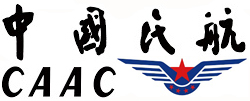Country
Crash of a Piper PA-42 Cheyenne III in Treinta y Tres
Date & Time:
Mar 20, 1998 at 1315 LT
Registration:
CX-ROU
Survivors:
Yes
Schedule:
Treinta y Tres - Montevideo
MSN:
42-8001074
YOM:
1982
Crew on board:
2
Crew fatalities:
Pax on board:
4
Pax fatalities:
Other fatalities:
Total fatalities:
0
Circumstances:
During the takeoff roll, at a speed of 90 knots, the captain decided to abort. Unable to stop within the remaining distance, the aircraft overran and came to rest 270 metres further against an earth mound. All six occupants escaped with minor injuries and the aircraft was damaged beyond repair. The grassy runway used by the crew is 1,008 metres long and the last portion of 300 metres was waterlogged.
Crash of a Piper PA-42 Cheyenne in Seven Islands
Date & Time:
Jul 26, 1995 at 1200 LT
Survivors:
Yes
Crew fatalities:
Pax fatalities:
Other fatalities:
Total fatalities:
0
Crash of a Piper PA-42-720 Cheyenne IIIA in Jinan: 7 killed
Date & Time:
Mar 23, 1995 at 1200 LT
Registration:
B-3624
Survivors:
No
Schedule:
Jinan - Jinan
MSN:
42-5501056
YOM:
1990
Crew on board:
7
Crew fatalities:
Pax on board:
0
Pax fatalities:
Other fatalities:
Total fatalities:
7
Circumstances:
The twin engine aircraft departed Jinan Airport for a local training flight, carrying six pilot under supervision and one instructor. At noon, in unclear circumstances, the aircraft struck the slope of Mt Huluyu (540 metres high) and crashed. All seven occupants were killed.
Crash of a Piper PA-42-720 Cheyenne III in Pucallpa
Date & Time:
Feb 8, 1993
Registration:
OB-1234
Survivors:
Yes
MSN:
42-8001007
YOM:
1980
Crew on board:
0
Crew fatalities:
Pax on board:
0
Pax fatalities:
Other fatalities:
Total fatalities:
0
Circumstances:
Crashed in unknown circumstances. There were no casualties.
Crash of a Piper PA-42 Cheyenne III in Grand Junction: 3 killed
Date & Time:
Oct 31, 1992 at 0815 LT
Registration:
N250TJ
Survivors:
No
Schedule:
Moab - Grand Junction
MSN:
42-8001024
YOM:
1980
Crew on board:
1
Crew fatalities:
Pax on board:
2
Pax fatalities:
Other fatalities:
Total fatalities:
3
Aircraft flight hours:
4784
Circumstances:
The commuter air carrier departed Moab, Utah, and flew to Grand Junction, CO, via rnav direct Macks intersection. After crossing macks intersection, the airplane turned right but instead of intercepting the localizer course, the airplane continued on a slightly divergent track to the east of the localizer. The pilot told control tower personnel, 'I'm showing twelve miles out on the ILS...getting real...erroneous signal, here. Any complaints?' the pilot was advised no difficulty reports had been received. The airplane impacted a mesa one minute later about five miles to the left of the localizer course. The cockpit was destroyed and no meaningful information was obtained from the navigational radios. All of the airport's navigational aids were later flight checked and no discrepancies were found. Although Vmc prevailed at the airport, the accident site was above the reported ceiling height. All three occupants were killed.
Probable cause:
Improper ifr procedure and resultant disorientation which resulted in a collision with terrain.
Final Report:
Crash of a Piper PA-42-1000 Cheyenne 400LS on Mt Hallasan
Date & Time:
Mar 20, 1991
Registration:
HL5204
Survivors:
Yes
Schedule:
Jeju - Jeju
MSN:
42-5527043
YOM:
1989
Crew on board:
3
Crew fatalities:
Pax on board:
0
Pax fatalities:
Other fatalities:
Total fatalities:
0
Circumstances:
The crew was completing a local training at Jeju-Jungseok Airport. On approach via 'White 2' airway, the captain cancelled his IFR flight plan and continued under VFR when, at an altitude of 2,300 feet, the aircraft struck east side of Mt Hallasan (1,950 meters high). The wreckage was found about 8 km west of the airport at an altitude of about 700 meters. All three crew members were injured and the aircraft was destroyed.
Probable cause:
For unknown reasons, the crew initiated the approach to Jeju-Jungseok Airport from the west while the standard procedure required an approach from the north. At the time of the accident, the visibility was poor due to low clouds and Mt Hallasan was shrouded in clouds.





